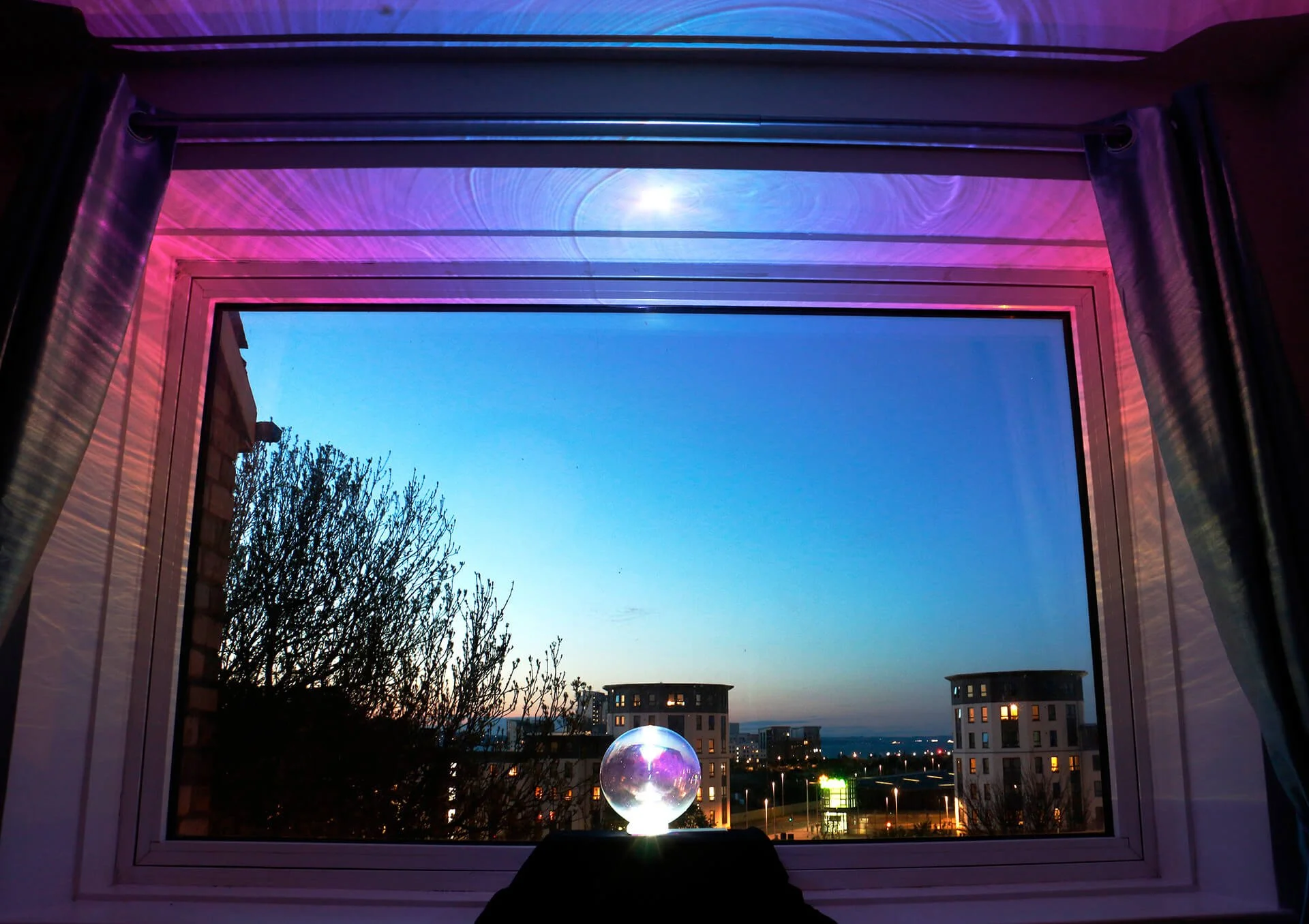STIRWORLD: Light-art windows send out message of hope to passers-by amid COVID-19 isolation
The Holocenter New York’s initiative Light Windows invited artists to create light-based art installations on their windows to steer hope and artistic engagement in community.
By Sukanya Garg
Published May 17, 2020
Tine Barkmann, Northern Lights, LIGHT WINDOWS, Edinburgh // Image Credit: Tine Barkmann
During the month of May, artists from across the world created and shared light-art through the Light Windows project. While the Holocenter often works with artists to create site-specific installations that augment the light coming into the gallery exhibitions, for Light Windows they turned the gallery inside out and invited artists to install light art in their own windows. The project started with artists Tine Barkmann and Kazue Taguchi, who they planned to show during May at a Wallplay venue in Manhattan. Instead Barkmann created her hand-made hologram sphere Northern Lights in her window in Edinburgh and Taguchi created a variation on her Rainbow Llum installation in her Brooklyn apartment. Further, the rainbows and teddy bears created by kids in windows was an inspiration to expand Light Windows and open the project to everyone.
Since then, the initiative has received numerous artist submissions. Mischa Kuball in Düsseldorf created an experimental work Private Disco, intended to be downloaded and played on the phone in abandoned streets. On the HoloCenter website viewers can also download a video called The Drifting Consciousness by Sarah Song and create one’s own seaweed neuron 4D projection with a pepper’s ghost pyramid. Linda Loh in Melbourne, Australia, dedicated her projection Art for the Possums to the possums outside her window. Further, the Centre for Projection Art, in Melbourne, is exhibiting six works in the windows of Collingwood Yards and in New York, Barak Chamo brought part of his closed exhibition to the windows of ChaShaMa arts space.
Mrongovius explains how, “online documentation enables these artists to share their light windows. Evolving installations over multiple nights highlights the process of creation as artists live with their works and lighting them becomes part of the routine of isolation”.
Light Windows has inspired a digital library of permanent light art installations that will become part of Gesso.app’s city and museum guides. As art and cultural spaces grapple with questions about how to deliver meaningful programming and continue supporting artists amidst the COVID pandemic, the project has also been a great way to connect artists and organisations. In fact, the initiative also celebrated May 16 - the International Day of Light - by live streaming artists from across the world who shared their works in the range of light, holographic and screen-based media. Artists and communities were seen transforming windows into a “world-wide public museum”.
According to Mrongovius, “the project encourages people at home and businesses to use their windows as an expressive space. One reason to draw attention to art right now is that artists continually adapt and find creative solutions to difficult problems. Beyond the medical emergency of the pandemic this pause has been a chance to reflect on what is not working. As people we have some big issues to solve and art gives us a platform to experiment with future concepts. Our streets are one of the few public spaces where we interact right now, and we are all figuring out new modes of engaging. Whether it’s on a window, mask or t-shirt, art can be a powerful reminder of the distance required to stop the spread of SARS-CoV-2. Art also brings an extra dimension into this space and can steer conversions towards how we can thrive.”
While traditionally a lit candle symbolises a prayer, for Mrongovius, the act of lighting up your windows also carries this intention while we wait to hug loved ones again”. Perhaps in the absence of hugs, the project is a step in the direction of creating an aesthetic of hope as a form of recourse.

